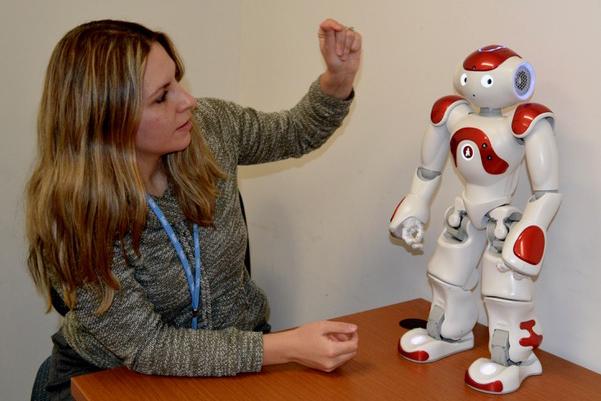Instructor Spotlight: Meia Chita-Tegmark

What inspired you to teach this course?
I teach this course because I, too, am grappling with how to make sense of the phenomena arising from social AI. And I’ve found that there is no better way to truly understand something than to challenge yourself to teach it.
But beyond my own search for clarity, I believe we urgently need people who can cut through the fog that surrounds so many aspects of social AI. My hope is that this class helps my students become those people—the ones who can see clearly, think deeply, and shed light on questions that matter to us all.
There is a lot of talk about AI on college campuses, and an increasing number of courses on the topic. What distinguishes this class from the others?
One area especially lacking in clear frameworks is how to think about AIs that exert social influence—technologies designed to shape our behaviors, emotions, and relationships with one another. In this course, my students and I work together to bring order and insight to these questions. We focus on personified AI technologies, which today are the subject of heated yet often fragmented debates. You can see just how unstructured the conversation is by the sheer variety of names—and their connotations—by which these technologies are described: persuasive AI, personified AI, shadow AI, personal robots, social robots, relational artifacts. Our class tries to make sense of this scattered landscape.
How has your relationship with AI evolved over the last several years?
Overall, I would say my relationship with AI has been defined by increasing concern over the years. My worries span from the subtle ways AI can erode our humanity to the profound risk that it could even threaten our species’ survival. I will highlight here one question has been haunting me: am I being replaced as an educator?
Here’s where I’ve landed: I still have something essential to offer—empathy. Empathy for my students’ struggles and breakthroughs, for the arc of their learning journeys. The ability to see their potential, encourage them, truly listen, and meet them as fellow learners. No AI can do that yet.
That is why I pour so much of myself into connection—listening deeply in class, offering thoughtful feedback, supporting students beyond the classroom. Teaching has always been for me an endeavor of both mind and heart, but now, more than ever, the heart leads.
What is one piece of advice you’d offer to students who are developing social relationships with AI?
I’ll keep this brief: if you’re inviting an AI into your social circle—as a therapeutic crutch, a companion, or a fantasy romance—ask yourself: why are you choosing an AI instead of a human for this role, and what might you lose by not seeking that connection with a person? Sitting with those questions can reveal a lot about your needs, your relationships, and yourself.